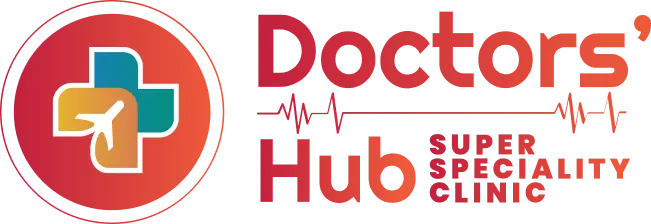Do you suffer from a persistent ache in your shoulder? Do you find it hard to lift your arm? Shoulder pain is very common. It severely limits your daily life. Simple tasks become painful struggles. Finding the right professional care is essential. Physiotherapy for shoulder pain offers the most effective, non-surgical path. This method focuses on movement and strengthening. It addresses the root cause of the pain. When seeking the best treatment, finding a reliable physiotherapy center near me in the Delhi NCR region is key
The shoulder is a very complex joint. It is often called a ball-and-socket joint. It offers the widest range of motion in the human body. This great mobility comes at a cost. It makes the joint unstable. It is prone to injury. Pain often comes from muscle strains. It comes from tendonitis or rotator cuff tears. Proper shoulder pain physiotherapy targets these specific problems. It uses targeted exercise for shoulder pain. These exercises restore strength and flexibility. They reduce chronic inflammation.
We will explore the fundamental goals of Physiotherapy for the shoulder. We detail the best exercises for different stages of recovery. We guide you on finding a high-quality physiotherapy center in Dwarka or other areas.
Why Physiotherapy in Delhi NCR for Shoulder Pain?
The shoulder joint needs a very specific approach. Unlike the knee, stability relies mainly on soft tissues. These tissues are tendons, muscles and ligaments. When these tissues are injured, they cause pain. They cause weakness.
Core Goals of Rehabilitation
A successful physiotherapy program has clear, defined goals.
- Pain Reduction: This is the immediate goal. Therapists use manual techniques. They use heat or ice. This reduces the initial sharp pain
- Restoring Range of Motion (ROM): Stiffness sets in quickly after injury. Gentle stretching restores full movement
- Building Strength: Strengthening the rotator cuff muscles is important. These muscles stabilize the joint
- Functional Return: The final goal is to return to normal activities
The journey starts with a precise diagnosis. A good Physiotherapy center in Gurgaon always starts here.
Stage One: Gentle Mobility and Pain Control
The initial phase focuses on reducing inflammation. It focuses on gentle movement. The aim is not to push through sharp pain. The aim is to move safely. These are the starting Physiotherapy exercise shoulder pain routines.
Pendulum Swings (Codman’s Exercise)
This is excellent for immediate relief. It is done without any muscle use.
- How to Perform: Lean over slightly. Support your weight on a table with your good arm. Let your injured arm hang straight down. Gently swing the injured arm in a small circle. Let gravity do the work. Do not use any muscle power.
- Goal: This movement lubricates the joint. It reduces stiffness. Perform this for one to two minutes. Do it several times each day.
Passive Range of Motion
You use your good arm to move the injured arm. This increases motion gently.
- Lying External Rotation: Lie on your back. Bend your injured elbow at 90 degrees. Use a stick or rod. Gently push the hand of the injured arm outward. Stop when you feel a stretch. Hold for 15 seconds.
- Table Slides: Sit at a table. Place your hand on a cloth. Slide the cloth forward slowly. Slide it away from your body. Use your body to push the movement.
These movements are essential building blocks. They prepare the joint for strengthening. You must do them pain-free.
Stage Two: Initial Strengthening Exercises
Once the pain is lower, strengthening begins. This phase builds stability. It focuses on the four rotator cuff muscles. They are very important. These exercise for shoulder pain use light resistance.
Isometric Exercises
These build strength without moving the joint. They are perfect for early healing.
- External Rotation Isometric: Stand in a doorway. Bend your injured elbow at 90 degrees. Place the back of your hand against the frame of door. Gently push outward. Hold the push for 5 to 10 seconds. Do not let your hand move.
- Internal Rotation Isometric: Stand facing the door frame. Place the palm of your hand against the frame. Gently push inward. Hold for 5 to 10 seconds
Tubing Exercises (Resistance Band).
Resistance bands are great tools. They provide gentle and adjustable resistance
- External Rotation: Stand. Hold the band ends. Loop the band around a door handle. Bend your elbow at 90 degrees. Pull the band outward slowly. Keep your elbow tucked to your side. Return slowly. Do two sets of 10 repetitions
- Internal Rotation: Reverse your position. Pull the band across your body. Pull it inward slowly. Keep the elbow tucked. This targets the subscapularis muscle
These specific exercises are the core of Physiotherapy in Delhi for shoulder injuries
Stage Three: Strengthening and Endurance
This is the final phase of Shoulder pain physiotherapy. It focuses on functional strength. It builds endurance. It prepares the shoulder for work and sport.
Scapular Stability Training
The shoulder blade, or scapula, is the base of the shoulder. Stability here is vital.
- Seated Rows: Sit upright. Loop a band around your feet. Pull the band back. Squeeze your shoulder blades together. Keep your back straight. This trains the middle back muscles.
- Prone T’s and Y’s: Lie on your stomach. Lift your arms out. Form a ‘T’ or ‘Y’ shape. Lift your arms only slightly. Use your shoulder blade muscles. Hold for 5 seconds.
Weight Bearing Exercises
These exercises simulate real-life demands. They help the joint handle weight
- Wall Push-Ups: Stand facing a wall. Place your hands slightly wider than shoulder-width. Lean into the wall. Perform a push-up. This is a controlled and safe way to build strength
- Plank on Forearms: Hold the plank position. This demands total shoulder stability. Start with 30 seconds. Gradually increase the time.
A comprehensive physiotherapy exercise shoulder pain program uses all these stages. Do not skip any part.
Best Physiotherapy Exercises for Shoulder Pain
We continue our discussion on effective shoulder pain physiotherapy. We focus on specific conditions. We detail advanced techniques. We look at patient education. We stress the role of self-management. Remember successful recovery relies on expert guidance. It relies on consistent effort from you.
Rotator Cuff Tendinopathy (Tendonitis)
This common injury involves inflammation. It involves small tears in the tendons.
- Emphasis: The focus is on low-load strengthening. This strengthens the tendons. It does not re-aggravate the injury
- Exercise Example: The “Full Can” exercise is key. Stand. Hold a very light weight. Raise your arm diagonally. Keep your thumb pointing upward. Stop at shoulder height. This targets the supraspinatus tendon
Adhesive Capsulitis (Frozen Shoulder).
This condition causes severe stiffness. It restricts movement greatly. The capsule around the joint thickens
- Emphasis: Gentle and sustained stretching is critical. You must increase the range of motion slowly. Pushing too hard makes it worse.
- Exercise Example: The Physiotherapy exercise shoulder pain here involves pulley stretches. Use an overhead pulley. Use your good arm to gently pull your injured arm upward. Hold the stretch at the point of tension. Hold it for 30 seconds.
Pain Levels While Exercising in Physiotherapy in Delhi NCR
When starting Physiotherapy for shoulder pain, knowing your pain is vital. Pain is your body’s signal. Ignoring it can cause setbacks. The goal is safe, gradual improvement. Progressing too quickly damages the healing tissue.
The Traffic Light System for Exercise
Therapists often use a simple guide. This helps patients manage their Physiotherapy exercise shoulder pain at home.
- Green Light (No Pain/Mild Ache): This means the exercise is safe. You can do this repetition. You can hold this stretch. This is the ideal zone for strengthening.
- Yellow Light (Moderate, Dull Pain): This pain is manageable. It is often a deep stretch. You must proceed with great caution. Do not increase the weight. Do not increase the range of motion.
- Red Light (Sharp, Shooting Pain): Stop the exercise immediately. This pain indicates tissue irritation. This is a crucial sign. Continuing can severely worsen the injury.
Therapy in Pain Reduction.
Physiotherapy in Delhi often combines exercise with hands-on treatment. This is called manual therapy.
Techniques Used by Therapists.
- Joint Mobilization: The therapist uses gentle and rhythmic movements. They move the joint. This technique restores joint play. It reduces stiffness. It improves the joint’s ability to move.
- Soft Tissue Release: This technique targets tight muscles. It targets knots in the muscles. Deep pressure is applied. This improves blood flow. It helps relax the muscles.
Manual therapy makes the exercise for shoulder pain more effective. It prepares the tissue for the work ahead.
Long-Term Shoulder Health
The best shoulder pain physiotherapy includes prevention. It educates the patient. Your daily habits can cause or worsen pain.
Workplace Adjustments
- Desk Height: Your elbows must rest comfortably. They must rest at a 90-degree angle. This prevents shrugging the shoulders.
- Monitor Level: The top of your screen should be at eye level. This prevents neck strain. Neck strain often causes referred shoulder pain.
- Breaks: Take micro-breaks every 30 minutes. Shrug your shoulders. Roll them gently.
A good Physiotherapy center near me always discusses these factors. They provide holistic care.
Finding the Best Care: Physiotherapy in Delhi NCR
Choosing the right clinic matters. The expertise of the therapist affects your outcome. You need a center specializing in orthopedic problems
What to Look For.
- Specialization: Look for a clinic focusing on musculoskeletal injuries. They should have experience with rotator cuff and frozen shoulder. A reliable Physiotherapy center in Dwarka will clearly list their expertise.
- Assessment: The clinic must do a detailed physical examination. They need to understand the underlying cause. This is more than just looking at the pain site
- Location: Find a conveniently located Physiotherapy center near me. Consistent attendance is very important for recovery
Look for a well-regarded Physiotherapy center in Gurgaon. This ensures access to top professionals
Questions to Ask the Clinic.
- Experience: Do you specialize in orthopedic and sports injuries? How many times a week will I see the therapist?
- Technology: Do you use advanced modalities? Modalities like ultrasound or TENS are helpful
- Individualized Plan: Will my physiotherapy for shoulder pain plan be unique to me? It should not be a generic sheet
For example, a respected Physiotherapy center in Dwarka will offer one-on-one sessions. They will provide continuous monitoring. Similarly, a top Physiotherapy center in Gurgaon uses an evidence-based approach.
Shoulder pain should not control your life. Effective Physiotherapy in Delhi can restore your mobility. It can eliminate the chronic pain. The path requires patience and dedication. It needs expert guidance.
Doctor’s Hub is a leading destination. We offer the best orthopedic rehabilitation. Our therapists specialize in advanced Shoulder pain physiotherapy. We design custom treatment plans for every patient. Whether you need a top Physiotherapy center in Dwarka or a skilled Physiotherapy center in Gurgaon, Doctor’s Hub provides the expertise. We use targeted Physiotherapy exercise shoulder pain. We help you move freely again. Trust Doctor’s Hub to guide your complete recovery.
FAQs.
Recovery time changes greatly. It depends on the injury. Simple tendonitis takes four to eight weeks. Frozen shoulder takes much longer. It can take up from six to nine months
In the first two days after injury, use ice. This reduces swelling. For chronic, lingering aches, use heat. Heat relaxes tight muscles. Ask your therapist for guidance.
A mild ache or stretch is normal. Sharp, shooting pain is a warning sign. Stop the exercise immediately. Tell your therapist about the pain. Never work through sharp pain.
Consistency is very vital. You should do the exercises once or twice daily. The total time is more important than the frequency. Do the assigned stretches and strengthening.
The shoulder needs strong muscles. These muscles hold the joint in the socket. Stability training prevents future injuries. It is essential for full recovery. It reduces the chance of recurrence.













